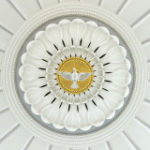I am very grateful to Rabbi David Rosen for the invitation to be with you today. Vividly do I recall the times we have been together: in 1992 in Baltimore for a meeting of the International Liaison Committee; in 1994, in Jerusalem for the same purpose; in 1997, in Auschwitz, in a panel on peace-making; in 1998, in Jerusalem, when our interfaith group listened to a report on interreligious work in Israel, and a week later, when we participated in a live and lively exchange on the Italian Radio Network. Especially moving was the time we were together in the year 2000 just before the arrival of Pope John Paul II in the Holy Land.
Each time we tried to take the temperature of the moment in the increasingly coincidental trajectories of measuring the progress of mutual understanding between the Catholic Church and the Jewish community. The contributions of the American Jewish Committee to this effort are remarkable. The Second Vatican Council produced the charter for our Church’s work since then. It also posed for our Church the enormous challenge of seeking to get the word out to our billion members, with the changes in our teaching at every level, and even in the language of our worship itself.
At the Council, Cardinal Augustine Bea introduced the first draft of what eventually became the Declaration on the Relationship Between the Catholic Church and Non-Christian Religions (Nostra Aetate). It seems to me like yesterday when the Cardinal stood before us at the Council to speak with persuasive logic of the request of Pope John XXIII before he died that the Council take up this issue. Cardinal Bea referred to what had occurred under Nazi rule in Europe during World War II. He repeated the injunction of Pope John XXIII that the Council should take whatever steps are necessary to be sure that never again would the Christian scriptures or the teachings of the Church be misused in a way that might contribute to anti-Semitism.
The Council document reminds Catholics of these points:
- The Church, as Saint Paul points out, is founded by Christ who, “according to the flesh,” pertains to the Jewish people (cf. Romans 9:4-5). The Virgin Mary, the Apostles, indeed practically the entire early Church could be correctly described as Jewish. Although some Jews opposed the spread of the gospel of Jesus, “nevertheless, according to the Apostle, the Jews still remain most dear to God because of their fathers, for he does not repent of the gifts he makes nor of the calls he issues (cf. Romans 11:28-29).”
“Since the spiritual patrimony common to Christians and Jews is thus so great, this sacred Synod (The Second Vatican Council) wishes to foster and recommend that mutual understanding and respect which is the fruit above all of biblical and theological studies and of brotherly dialogues.” - With specific reference to texts of the Christian scriptures, the Council points out that what happened to Jesus in “his suffering cannot be blamed upon all the Jews then living, without distinction, nor upon the Jews of today.” What follows is the basis for catechetical instruction to ensure that neither Christian scriptures nor Christian teaching could be used in any way that would be an excuse for anti-Semitism.
A Baltimore native, Rabbi Mark Tanenbaum, represented the American Jewish Committee at our emergency International Liaison Committee meeting in Rome in 1987. There he helped all present realize better the complexity of the Holocaust in Poland, when he told us of a meeting of Jewish and Catholic survivors he helped to organize in Chicago. All was anger and confusion until he had each Jewish survivor describe how he or she succeeded in escaping. Every single one had been saved by a Catholic Pole! A book published earlier this year tells the story of many rescues: The Righteous, the Unsung Heroes of the Holocaust, by Martin Gilbert. (Henry Holt & Co., L.L.C., New York, publishe

